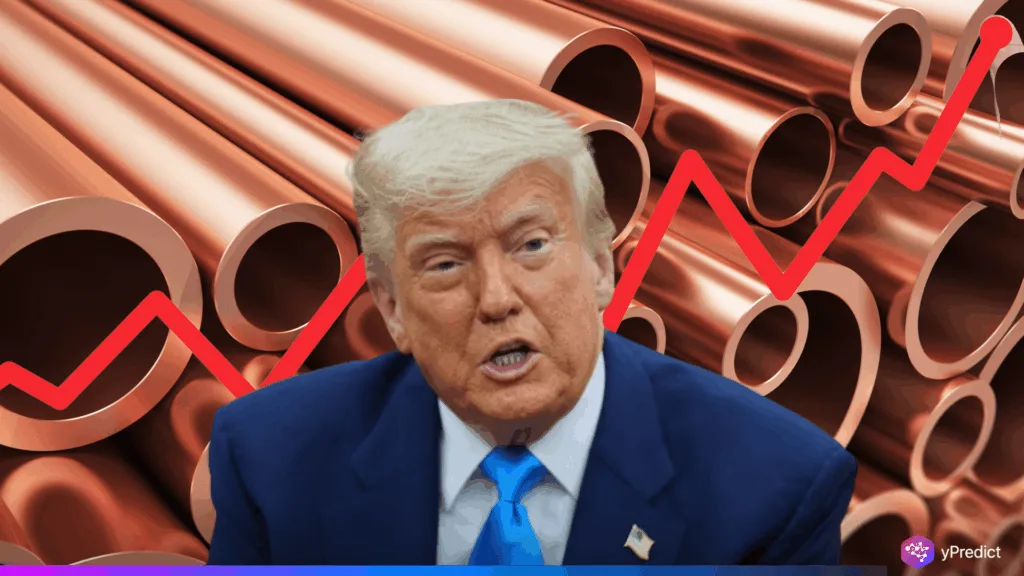
President Donald Trump has announced a 50% copper tariff in an effort to boost domestic production. The decision caused U.S. copper futures to jump 12%, setting a new record. Trump’s action is part of his larger trade strategy, which targets key industrial sectors. Furthermore, it might have a big effect on Mexico, Chile, and India, three important copper exporters.
Can a Copper Tariff Really Rebuild US Industry?
President Trump made the tariff announcement at a cabinet meeting. Subsequently, Commerce Secretary Howard Lutnick confirmed that they would likely start on August 1. The United States imports about half of its copper annually. The market responded immediately, causing COMEX copper futures to soar by more than 12%. The tariff was approved after the Trump administration finished a Section 232 review earlier than anticipated.
Additionally, industry groups refrained from commenting, despite the fact that share prices of domestic producers such as Freeport-McMoRan increased. The ongoing opposition to U.S. mining projects is limiting the short-term growth of local output. Therefore, the action might increase expenses for American businesses that rely on imported copper.
Pharma Exports and Copper Tariff Threaten India’s Gains
India exported $360 million worth of copper to the US in 2024–2025, which accounted for 17% of its total exports. Experts believe India’s domestic market could make up the difference, even if the 50% copper tariff reduces shipments. The largest export market for India to the United States is at risk due to the possibility of a 200% pharmaceutical duty.
Pharma exports from India to the US totaled $9.8 billion in FY25, a 21% increase over FY24. This amounts to 40% of India’s global pharma exports, with generics serving as the primary driver. Furthermore, an abrupt rise in tariffs could disrupt the supply chain and raise the price of medications for American consumers. However, a mini-deal could provide some relief if it is signed prior to the deadline of August 1. Some industries may be protected by the ongoing trade talks between the US and India.
Could Global Trade Split Over Tariffs?
Trump’s bold trade policies could change the way that India exports pharmaceuticals and copper. Global supply chains for necessities will be disrupted, and the effects will go beyond India. Additionally, declining U.S. demand may have an effect on the trade balances of nations that export copper. This includes nations like Mexico, Chile, and Canada. Overall, at a time when global markets are already unstable, the tariffs run the risk of escalating wider trade tensions.







